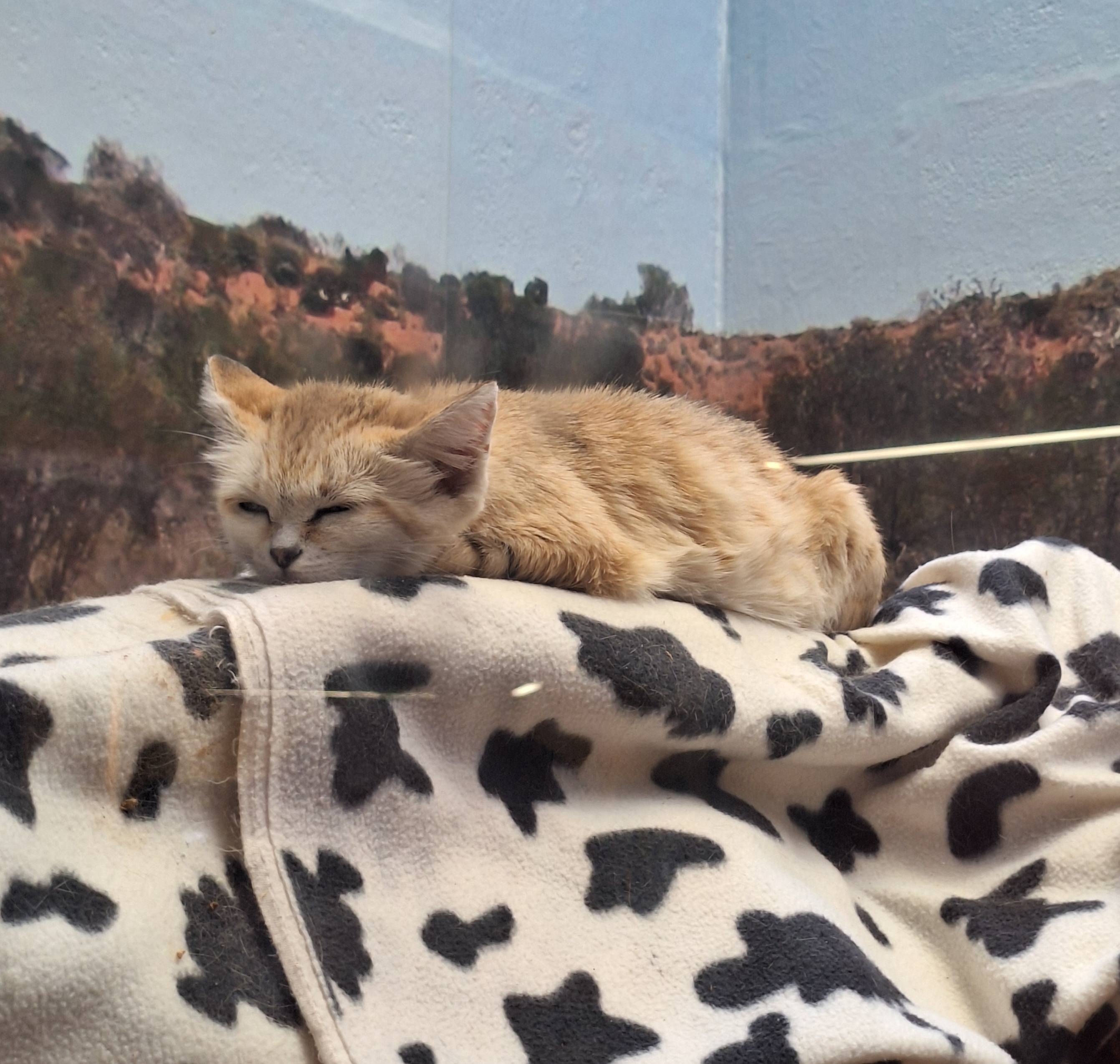National Zoo Excursion Report
Washington D.C., 4 May, 2025

Picture of a Sand Cat
Small Mammal Exhibit:
The small mammal exhibit was expansive and featured animals from all over the world. I focused on four I had not seen before: a Tamarind, a Black Hyrax, a Brush-tailed Bettong, and a Sand Cat. These animals intrigued me because of their novelty. The displays were accompanied by plaques displaying information on the animals. For the Tamarind, the plaque stated that they are native to the tropical forests of eastern Brazil and Uruguay. It also said they primarily eat insects, small animals, bird eggs, and fruit. It also gave conservation information, stating that Tamarinds are endangered due to hunting and loss of habitat. Similar details accompanied the Black Hyrax. The plaque provided that Hyraxes live in the grasslands of Africa, and primarily eat grasses and shrubs. In addition to this, the plaque also said that you may find a Hyrax basking in the sun on a warm day. For the Brush-tailed Bettong, its plaque provided that it is native to the shrublands and forests of South Western Australia. It also said the Bettong eats leaves, fungi, fruits, roots, bark, and small animals. Much like the Tamarind, it also provided that the Bettong is endangered. This is due to the introduction of cats and other predators. The final animal I recorded was the Sand Cat. This animal is native to the deserts of West Africa and the Middle East. Much like other cats, it is a carnivore, with its diet consisting of small mammals, reptiles, insects, and birds. One display from this exhibit that is more than just a plaque is the display of skeletal structures. This display shows different skeletal structures from various animals and how they are adapted to fit the specific needs of that animal. This hall is aimed at younger audiences due to the simple displays and easy-to-digest information. This easy-to-digest information led many people not in SGC to read the plaques and learn about these animals.
Merck Tour of Amizonia Exhibit:
I participated in Dr. Merck's tour of the Amazonia exhibit. During this tour, I learned about many species and information I had not previously known. The first was the various species of fish on display. The lateral lines on a fish are comprised of cells similar to those of the human inner ear. This means that fish have long, ear-like structures lining the sides of their bodies. This fact intrigued me, being a fan of fishing and having fish myself. A specific species of fish that was interesting to me was the Knifefish. This fish uses its tooth-lined tongue to saw its prey in half before eating it. In addition to fish, another aquatic species was on display: the mata-mata turtle. This turtle is interesting because, unlike other turtles, its mouth lacks bony plates to crush its food before consumption. Instead, this turtle sucks its food directly into its throat for digestion. In conjunction with the animals on display, there was also a greenhouse area with many species of plants. In this area, Merck shared with us one of the many adaptations plants have made to live in this environment, buttress roots. Buttress roots are most commonly found on trees that live in sandy, loose soil. These roots begin high up on the tree's trunk, fanning out as they reach the ground to increase the area covered by the tree's base. This is important because a normal tree would fall over in the loose soil, necessitating buttress roots. A final species that I would like to talk about is the Guinea Pig. Guinea Pigs are found in Peru, on the outskirts of the rain forest. An interesting fact about them is that they are farmed for food by the local population. The greenhouse display went above and beyond in showing you the conditions in a rainforest, leading to a deeper understanding of these species' environment. The exhibit is aimed at a younger audience due to the simple explanation of the material. Still, Merck's tour provided a deeper understanding of the species and the place they live. Other people not in SGC were reading the plaques provided, and I even noticed some tagging along the back of the tour to hear the insight Merck was providing.
Picture of birds at the Amazonia exhibit
Education:
Zoos provide more than plaques to help visitors learn about the species on display. They include many other elements, such as displays featuring bones, large-scale recreations of habitats, and interactive displays with the animals. The National Zoo features all of these, but does exceptionally well with the interactive displays and habitat recreation. The Think Tank exhibit features an area where you can play tug-of-war with a Chimpanzee. This helps visitors connect with the animals and shows that they are real things, not just objects behind glass. The National Zoo also has a wonderful display of a simulated rainforest environment in its Amazonia exhibit. Many different plant and animal species lead to a sustainable ecosystem within the display that you can walk through and observe.


